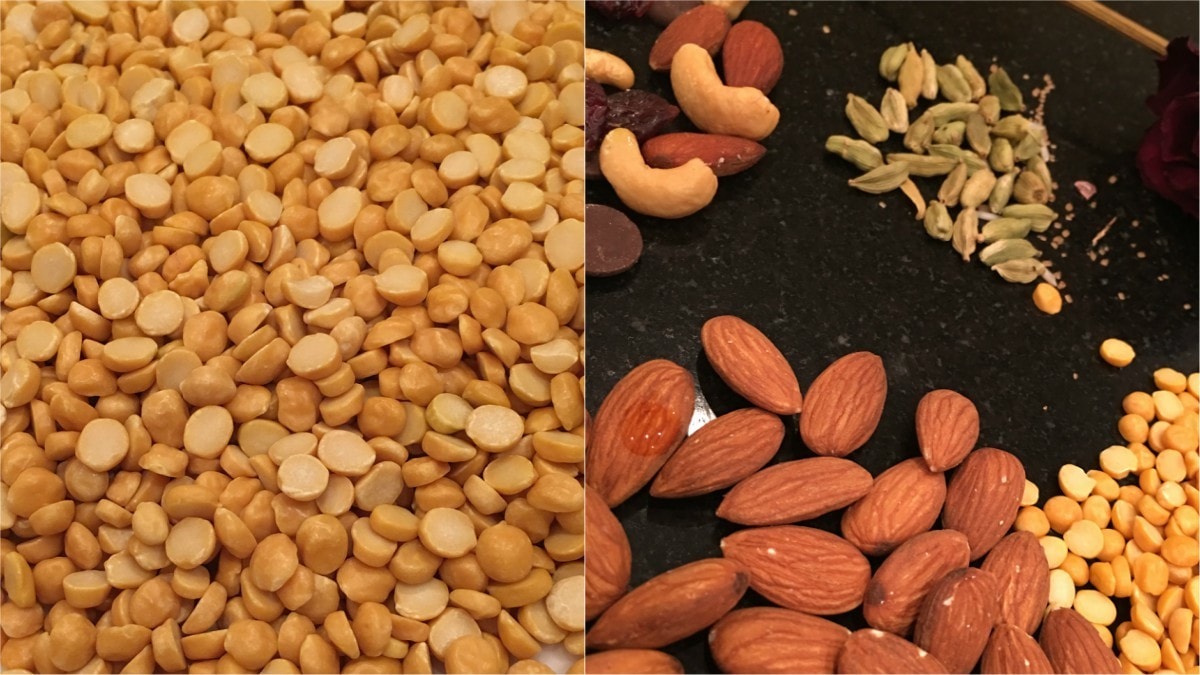Chanay Ke Daal Ka Halwa is my absolute favourite dessert.
I fell in love with it some decades ago when my little self used to stand in the corner of our home terrace, devouring a plate of Chanay Ke Daal Ka Halwa, unaware of the peeping auntie from the house next door.
Yes, I was a fat, chubby if one wants to be kind, little kid, always ready to sneak Chanay Ke Daal or Gajar Ka Halwa.
I remember my anticipation and excitement on noticing that Ami was getting ready for a siesta, and Jalal, our telltale cook, had closed his kitchen too. That translated into me gliding to the freezer, stealing a small frozen portion of Halwa and heating it to edible perfection in the January of Karachi.
Yes, it was the early 80s and I was a pre-teen. This was my afternoon romance with Halwa, and it lasted for just a season, and the reason?
Shamshad Auntie’s Chinese whispers to Ami.
Delightfully delicious, that’s the only way to describe Chanay Ke Daal Ka Halwa. Who thought of adding sugar, milk and ghee to ground chanay ke daal, simmering it until the milk evaporates and serving it as a delectable dessert?
Also read: My quest for the best halwa puri in Lahore

Halwa finds its roots in the Arabic language and refers to many dense or compact desserts. Originally Halwa was either flour based or used various nuts with sugar, milk and butter to create a sweet gelatinous, or hardened nutty dessert.
It is commonly believed that this kind of Halwa was introduced to the settlers in India through trade with the Middle East and Asia Minor during the expansion of the Mughal Empire.
However, the halava native to our sub-continent is best described in The Hare Krishna Book of Vegetarian Cooking by Adiraja Dasa;
"Sweets from the subcontinent are generally made from milk products, fresh fruits, whole grains, chickpea flour, lentil flour, and nuts. Of all the sweets in the subcontinent, milk sweets are the most delectable, and with traditional cooking methods, you can make them in a great variety. Another group of sweets are the ones made from toasting and roasting chickpea flour, lentil flour, and dried fruits in a base of milk. There are various kinds of halava (no resemblance to the Turkish variety). These are made from combinations of nuts, semolina, hazelnuts, fresh fruits, carrots, lentil flour, and chickpea flour.
The shared food heritage between Pakistan and India is fascinating: we share the same food stories and love the same foods, and can rightfully lay claim to most foods as our own. This not only makes for a delightfully interesting dinner conversation with friends, but also a common ground to share family recipes and stories.
My mom made scrumptious Chanay Ke Daal Ka Halwa, the kind that made a petty thief out of me, but sadly I never took the recipe from her. However, when I was looking to make this Halwa, my school friend Eram Rabbani Ashraf came to my rescue and shared her recipe with me. I modified it just a tad bit and the outcome was a bowl full of sweet sunshine deliciousness. Here it is, from my kitchen to yours.

2 cups chanay ki daal
Milk
Sugar
Oil
15 green cardamoms
1/2 cup blanched almonds, chopped.
¼ cup pistachios

Soak daal 6 to 8 hours.
Drain and grind in a food processor until fine.
Pour the ground daal into a heavy based pan and cook on low heat, adding milk and stirring periodically.
Once the milk starts evaporating, add oil, cardamom and sugar to taste.
Now begins the heavy stirring, keep stirring and adding oil until the consistency is right.
As you keep stirring, the colour of the halwa starts changing to a golden brown. Do not lose heart, keep stirring, adding oil if required, and slowly but gradually the oil will separate.
Keep stirring until oil separates, and the colour is a rich beautiful golden.
Garnish with nuts, and serve.
Comments